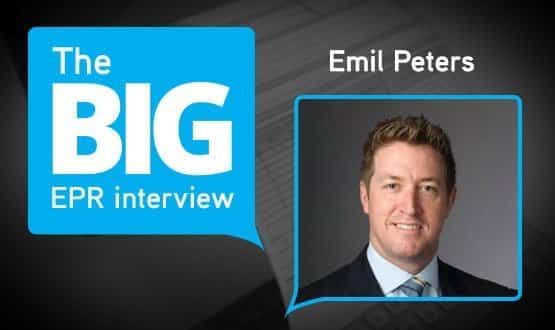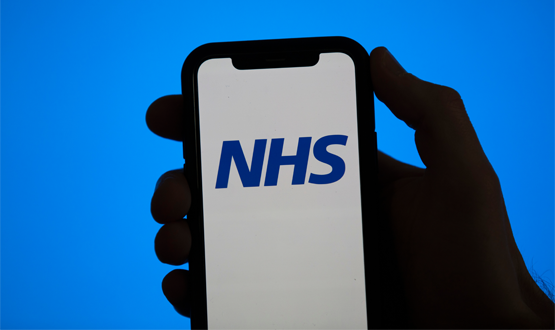The Big EPR Interview: Emil Peters
- 21 May 2013

Cerner is one of the companies most associated with the National Programme for IT in the NHS. Its Millennium system was, eventually, chosen as the ‘strategic’ system for London and much of the South of England.
Yet it is now operating in a rather different world. In January, health secretary Jeremy Hunt called for a ‘paperless’ NHS by 2018, but made it clear that there would be no national programme to create one.
Instead, NHS England has been asked to draw up guidance for trusts on the first step on the road – using electronic patient records – by June. Trusts will then be expected to have plans in place by April that they can act on through 2014 and 2015.
Emil Peters, the vice president and managing director of Cerner, welcomes these moves, saying that Hunt and national director of patients and information Tim Kelsey have been “rightly ambitious” when it comes to setting out a vision for NHS IT.
“The targets – delivering a paperless NHS by 2018, starting with EPRs in 2014 – are essential to building the momentum and focus required to transform how the NHS operates,” he wrote in a response to The Big EPR Debate launched by EHI.
On the other hand, he wrote, “visions alone won’t deliver change. They need to be underpinned with a credible plan for delivery, and that is what this summer’s guidance has to address.”
Timetables and money
Practically, Peters added: “The guidance needs to provide clarity on three elements of the EPR plan; the timetable for compliance; the financial mechanism for delivery; and establishing the balance between national and local responsibilities.”
Taking these in turn, he argued: “Even the most ambitious of EPR champions recognises that not all trusts can have an operational EPR in place by 2015.
“The guidance needs to address this, with a timeline that is robust enough to maintain momentum, but also plausible, particularly for those trusts beginning the process from a standing start. It should set out what progress trusts need to demonstrate, by when.
“NHS England also needs to set out how EPR adoption will be driven. The ‘meaningful use’ initiative in America has delivered rapid EPR uptake by providing financial incentives to providers that invest in technology.
“NHS trusts would, no doubt, prefer a similar carrot-based approach here. However faced with constrained budgets, NHS England needs to clarify whether it will be offering incentives for success or threatening financial penalties for failure.”
In an interview with EHI, Peters stresses the importance of getting the right incentives in place. “It’s great to have carrots, and we look on those kindly, because that’s what trusts are looking for; but we don’t want to just procure IT systems.
“We need to ask what we are achieving for clinicians and patients. We are looking for the centre to provide incentives; to ask the question of what we really need to do, and not just to go down the pick-list of IT systems and buy them.”
He also argues that if NHS England produces a roadmap, it should be tied to outcomes such as “increasing productivity or reducing hospital acquired infections.”
On the other hand, he says the commissioning board should avoid the temptation to impose penalties, as Kelsey has hinted that it might. A penalty structure will “take the focus away from the real objective, which is to focus on the outcomes,” he says. “Trusts [will] ensure they tick certain boxes to avoid penalties.”
Focus on outcomes
In his initial response to The Big EPR Debate, Peters argued that there are three aspects of EPR functionality that NHS should be focusing on; improving clinical outcomes; changing how the NHS measures and uses data; and increasing efficiency.
“To improve outcomes, NHS England should focus on EPR functionality that supports more informed clinical decisions,” he wrote.
“This means ensuring clinicians have access to reference information at the bedside, allowing decisions to be based on the most relevant and updated evidence. Clinicians should also be supported by automated alert technology that promotes recommended practices and warns where decisions might jeopardise patient safety.”
When it comes to improving the use of data, Peters adds his voice to the growing number of NHS managers and clinicians calling for “a determined effort to simplify and standardise disparate information” that has been reflected in, for example, Mike Farrar’s bureaucracy review for the Department of Health.
“Structuring the medical record around the patient in a single view not only helps clinicians to make informed decisions, but is an essential stepping stone towards embracing population health that uses standardised data to identify risk and help prevent problems before they emerge,” he wrote.
“EPRs won’t make population health a reality in the short-term, but they can transform how the NHS starts to collate and use patient data, which is critical to addressing the long-term challenges of rising demand and demographic change.”
On the other hand, he added: “We have to be realistic in accepting that EPR decisions are being taken at a time of budget constraint and therefore adoption should prioritise functionality that can improve NHS efficiency."
This, he added, meant focusing on technologies that can cut the amount of time clinicians spend on administration and that improve the management of workflow and beds.
“Hospital Marina Salud de Denia in Spain has released nearly 8,000 physician and nursing hours a year by rationalising workflows,” he wrote. “It has also streamlined bed management, reducing average stays by 10% and increasing occupancy rates.”
In conversation, Peters argues that the NHS needs to learn from such innovations and drive them across whole trusts; effectively reducing the cost of technology itself in the process.
“It would be helpful [for NHS England] to produce three or four different case studies of ways in which different trusts have gone about deploying electronic record keeping, all with the same result in mind,” he argues.
Don’t fixate on price
Peters’ views mirror those of EHI readers who have taken part in The Big EPR Debate. Comments and responses to The Big EPR Survey show there is considerable support for the idea of a roadmap to EPR, adapting the well-understood ‘ladder’ models of 1990s IT strategies.
There is also support for targets and for ‘meaningful use’ payments, which were backed by some two thirds of survey respondents.
EHI launched The Big EPR Debate because there seemed to be a small window of opportunity to influence the NHS England guidance, and to come to a view on whether it was taking the right approach after the NPfIT years.
One question now is whether the commissioning board is listening. Peters says it is certainly talking to industry.
“We have definitely had some good interaction with the centre. “They are taking a measured approach to figuring out what’s out there in the market, and have taken on recommendations. We feel engaged and like we have got a voice.”
Perhaps unsurprisingly, though, he is not keen on another idea to come out of The Big EPR Debate, which is that companies should be much more transparent about their pricing.
Peters told EHI that he did not support open book pricing, because it could make trusts “focus on the wrong thing.”
“The danger in exposing just the price is that it could get you into a situation where you’ve got two A&E systems, and there is little variety in price, but [price] distracts you from looking at which organisations have been able to transform departments, create better outcomes and efficiencies [by using those different systems],” he says.
“There’s a whole clinical transformation aspect which may get left out by just looking at price comparison.” Anyway, he adds: “The market will decide about the pricing.”
Still top of the agenda
Overall, Peters is optimistic. The problems associated with the NPfIT could have encouraged politicians to simply give up on health IT, he points out, but instead it remains at the top of the agenda.
Meanwhile, managers like Farrar, who leads the NHS Confederation, are pushing for a renewed focus on the role of technology in transforming the NHS.
Campaigns such as the Big EPR Debate were helpful in moving the conversation along, he says, and chief clinical information officers should have an important role in convincing people that “technology is part of the answer.”
Still, he stresses, the success of health IT adoption in the US has been closely related to the funding associated with it; and it will be vital to show success by proving clinical benefit.

EHI is running The Big EPR Debate to give readers a chance to shape the future of electronic records and a paperless NHS. What should NHS England’s guidance cover? What is an EPR? What is essential and what can be left for later? What should the next steps be. Join the debate.




